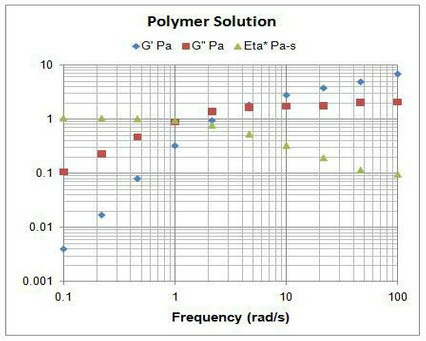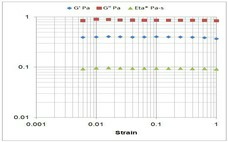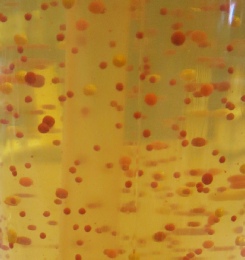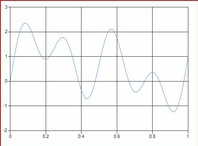
RHEOLOGY TESTING AT FLUID DYNAMICS (908) 200-5823


Copyright 2021. Fluid Dynamics, Inc. All rights reserved.

Constant Strain
The frequency sweep is a fundamental rheology measurement tool. It is critical to the full characterization..

An example of an experimental frequency applied to the sample at constant strain is provided below.
Strain sweeps and frequency sweeps together are powerful rheology tools for the study of fluid and soft body systems. They are key to understanding the physical strength and cohesiveness of the system under test.
Frequency sweeps are classically plotted as log:log graphs. This typically shows the Modulus, G’, Loss Modulus, G” and complex viscosity, n* (Eta*), as a function of frequency in radians/s or hertz, in the linear region. These measurements are performed at constant strain amplitude with a progressively increasing frequency.

When measuring frequency sweeps
1. What frequency range needs to be covered?
2. Data acquisition - number of cycles?
3. Torque values at low frequencies.
4. Harmonics in torque signal.
5. Strain values.
6. Advanced rheometers allow for a programmable strain to complete frequency sweeps with reliable data.
7. Monitor torque output and torque waveform through frequency range.
8. Sample exposed surfaces need to be protected to ensure stability throughout the course of the test.
9. Strain sensitive materials always require special experimental considerations for good reproducibility.
10. Document testing procedures for both strain and frequency suites.
Elastic vs viscous behavior
Where is your material on the VE spectrum? And how does this influence how your product looks and feels?


Slip at the wall?
Torque values?
Reproducibility?
Edge effects?












